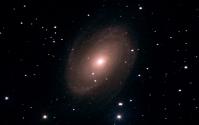Strongly Celestial Looking outward; looking backward in time... |
|||
 |
|||
Star Gallery These are my pictures of stars and star groupings. Because pictures of stars themselves are not so interesting (they're just pinpoints of light), I will include in the description what I found interesting and why I took the photo. As with all of my galleries, click on the picture itself to bring up a larger, scaleable copy of the picture in a separate window; be sure to expand that window to see the full size of the image! |
||
Subject: The Pleiades - open star cluster (M45) Equipment: Comments |
||||
Subject: Epsilon 1 & 2 - "the double double" Equipment: Comments |
||||
Subject: Polaris (North Star) - double star Equipment: Comments |
||||